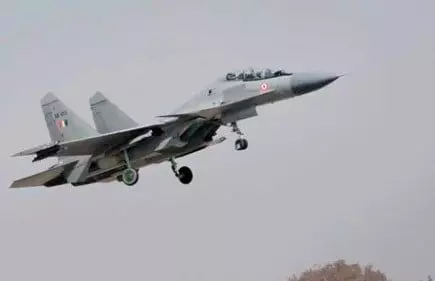The Rising Tensions: Understanding PM Modi's Strategic Moves Amidst India-Pakistan Conflicts

What’s Happening Today in India-Pakistan Relations? In recent weeks, tensions between India and Pakistan have escalated dramatically, drawing the attention of the international community. Prime Minister Narendra Modi has been actively engaged in discussions with national security advisors and military leaders, focusing on a strategic response to various provocations, including the tragic Pahalgam terrorist attack. As the Prime Minister broadcasts his thoughts and strategies live today, many are keen to understand the implications of these events.
One of the most significant developments is the large-scale military drills planned by the Indian Air Force along the international border with Pakistan. Scheduled from 9 PM on Wednesday to 3 AM on Friday, these exercises are intended as a routine training operation. However, they are certainly viewed as a demonstration of India's military readiness amid rising tensions.
During this period, flights in and out of airports near the border will be suspended, highlighting the seriousness of the drills. Notably, this is not just an isolated event; earlier in the month, the Indian armed forces conducted extensive military exercises featuring advanced aircraft such as the Rafale and Sukhoi-30 jets. Such operations are vital for maintaining operational readiness and sending a message to adversaries.
PM Modi's Leadership and Response Strategy
Prime Minister Modi has convened multiple high-level meetings, including discussions with Defence Minister Rajnath Singh and National Security Advisor Ajit Doval. These meetings have underscored a significant shift in India’s military strategy, where the PM has reportedly granted the military “complete freedom” to respond to threats. This level of autonomy is unprecedented and indicates a more aggressive posture in the face of terrorism and military provocations from Pakistan.
Interestingly, as I tuned into PM Modi's live address today, it was clear that his government is committed to taking every necessary step to ensure national security. His message was clear: terrorism will not prevail, and India will take the fight to those who threaten its sovereignty.
The Civil Defence Drills: Preparedness for All Scenarios
In addition to military exercises, India is also conducting civil defence drills across nearly 300 locations nationwide, a practice not seen since the 1971 war. These drills aim to prepare civilians for possible military action and ensure an effective response to emergencies. In a time of heightened tensions, such measures not only bolster public confidence but also reinforce the government’s commitment to safeguarding its citizens.
As the situation continues to evolve, it remains crucial for citizens and international observers alike to stay informed. The upcoming military drills and the Prime Minister's live declarations are just a part of a larger narrative that includes diplomatic maneuvers and military readiness. The geopolitical landscape between India and Pakistan is complex, and as both nations continue to test each other's resolve, the potential for conflict remains a serious concern.
In summary, keeping a close eye on PM Modi's live updates and military activities is essential for understanding the unfolding narrative in South Asia. The stakes are high, and the world watches closely as India navigates these turbulent waters.
